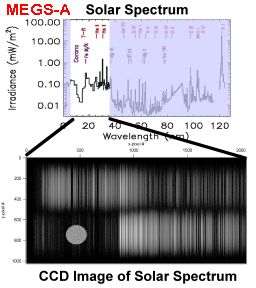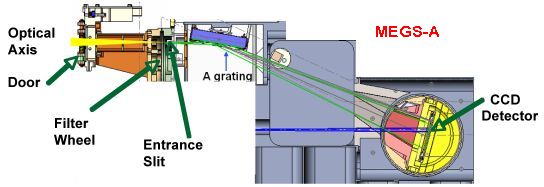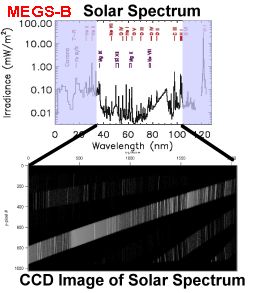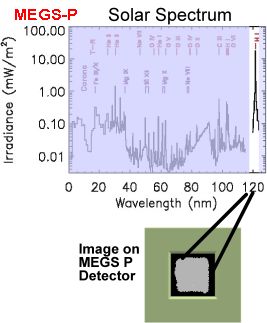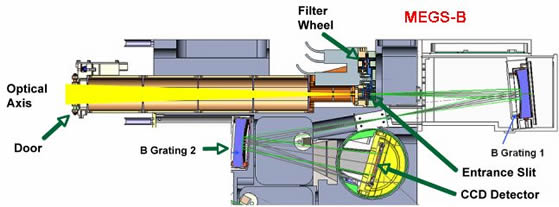About MEGS
MEGS is provided by LASP. MEGS provides the solar EUV spectral measurements from 5 nm to 105 nm with 0.1 nm spectral resolution and with 10 sec cadence. MEGS uses back-illuminated 2048 x 1024 CCD cameras and camera electronics from MIT Lincoln Laboratory. Much of the heritage for MEGS is from the TIMED SEE instrument.
The Multiple Euv Grating Spectrograph (MEGS) has 4 channels:
- MEGS-A: grazing incidence grating spectrograph for 5 nm to 37 nm range
- MEGS-B: double normal-incidence grating spectrograph for 35 nm to 105 nm
- MEGS-SAM: pinhole camera used with MEGS-A CCD to measure individual X-ray photons in the 0.1 nm to 7 nm range
- MEGS-P: photodiode used with the first grating in MEGS-B to measure the bright H I Lyman-alpha emission
